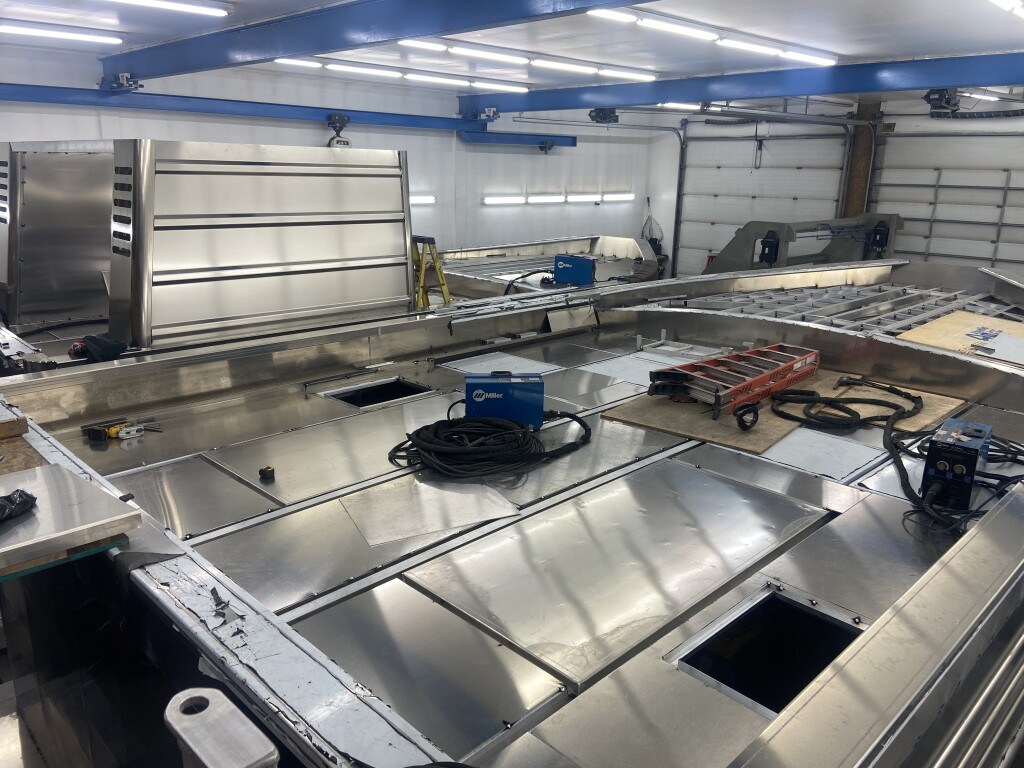Peregrine Boats builds a pair of bow-and-stern pickers for Bristol Bay salmon fishermen
Peregrine Boats in Chugiak, Alaska, is building a pair of 32-foot Bristol Bay double-enders for commercial fishermen in Seattle and Glennallen, Alaska. Each has an 8-foot draft, though the one for Seattle has a 17-foot beam, and the Glennallen gillnetter a 16-foot beam.
Both are bow-and-stern-picker designs, but instead of featuring a 5-foot-wide by 9-foot-long wheelhouse mounted on the side of the deck — with the gillnet reel traveling next to it as it goes from bow to stern, like the previous gillnetter built at Peregrine Boats — these 32-footers have the more conventional double-ender design. That’s with the wheelhouse near the stern and elevated 7 feet above the deck on two 3-foot-wide by 10-foot-long deck stanchions. The gillnet reel travels beneath the wheelhouse as it goes from bow to stern and back again.
Peregrine Boats’ Jeff Johnson says fishermen like the design “because they are up high and can really see well.” Just as important is the extensive workspace. The crew has “the entire length of the deck to work,” from bow to stern. “They can set on-step off the stern and then be able to pick off the bow,” which is important in very shallow water.
That’s opposed to the traditional wheelhouse-forward gillnetter “that’s not able to pick off the bow,” says Johnson. “It’s a lot easier to pick your gear forward, especially if it’s windy.”
The elevated wheelhouse has a pair of bunks, while up forward are quarters for four. One of the stanchions has a head and a shower.
Twin 600-hp 8.3 Cummins engines will power both gillnetters. One set of Cummins diesels will be matched up with MJP UltraJets and the other with Doen waterjets. Both gillnetters should be able to get on step with 14,000 pounds aboard. The engines are keel cooled because “they fish in such shallow water,” says Johnson. “They always have problems with raw-water cooling, pumping sand into the motors and overheating. These won’t have that problem.”
Johnson figures that since the design is similar to what he’s built before, the gillnetters “should be pushing 40 knots.”
One possible drawback to the raised wheelhouse design is when the boats are ready to be launched in the spring, each one will be hauled down the road to the water minus its wheelhouse. “It’s too high to go down the road,” explains Johnson. Both wheelhouses will be prebuilt and completely wired and will only require a few things to be hooked up, once they are lifted in place at the launching site.







